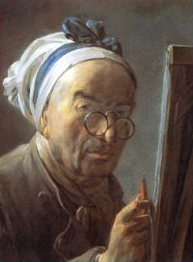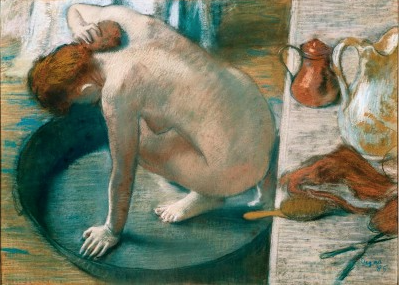Pastellus: Pushing Pastels
- Dec 26, 2016
- 2 min read
It isn’t as easy as you might think to come up with a name for a monthly column in a pastel newsletter. At this point we will stick with the Latin word for pastel - pastellus - because it’s fun to say and because it is the beginning of written history - not pastels, just words.
The beginning of pastels goes back to pre-historic cave paintings in southern France, Spain and South Africa. The first popular pastel artist was Rosalba Carreira, born in 1675 in France. She used rubbing and blending to achieve a soft delicate feeling.
Carreira - Maria (left). Carreira - Head of a girl (right)
There were several other pastel artists of note including Maurice Quentin de La Tour who advanced the art of pastel with the use of brilliant color and texture, La Tour is credited for inspiring Jean-Baptiste-Simeon Chardin. Chardin used pastels early in his career and believed pastels had no equal for freshness and spontaneity, but in the end, he ‘gave in and painted oil’ (artistshow.com) as pastels faded from popularity. Returning to pastels at the end of his career and was very successful with them.
Chardin - Still Life with tin, glazed jar, fruit and bottle (left). Chardin - Self Portrait (right).
Seventy-five years would pass before pastels came into popularity again-during the impressionist era. Which brings us to Edgar Degas who deserves an afternoon (at least) of googling. He not only used the medium for it’s ability to convey light and atmosphere, but he greatly expanded pastels range through experimentation. He mixed pastels with paints, steamed them, dipped them in solutions and fixed layers. He experimented with surfaces as well, canvas, board, card board and paper, all the time pushing his art to the next level, combining drawing and painting, constructed images, and illustrations. Thanks to Degas, ‘pastel was no longer considered a pale, pallid medium’ (Historical Foundations of Pastel)
Degas - Dancer with Bouquet (left). Degas - The Tub (right).
Of course the history of pastels continues and I could go on for days. This is a column, so I won’t, but it is well worth an afternoon on the computer looking at the history and the masters who used pastels. Not only does the understanding of our mediums’ history help us speak more effectively about our art, it inspires us to experiment with our medium, techniques and our perspective.
Speaking effectively about the medium we work in and love not only pushes us in our pursuits, it helps us inspire other creative minds and awaken others to a medium not often recognized by those outside of the art community.












